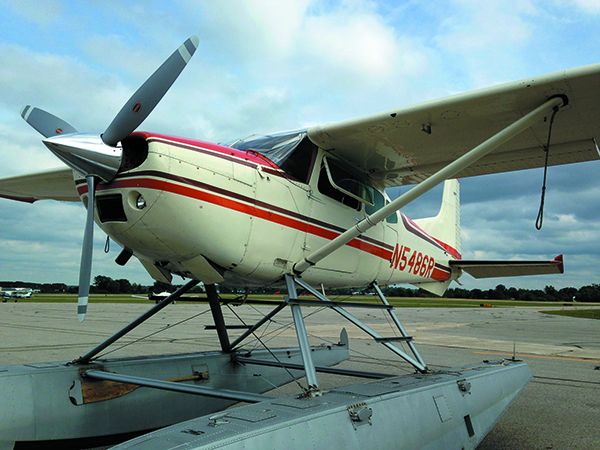The reality is that the fleet of Cessna singles is aging, and a new FAA airworthiness directive is a reminder that focused airframe inspections might be the best defense against corrosion and structural failure.
The latest is FAA AD 2020-21-22, which became effective on Dec. 7, 2020. The issue began with a report of cracks found in the tailcone and horizontal stabilizer attachment structure on a Cessna 185. The FAA then discovered similar conditions on 29 additional Textron Cessna 180- and 185-series airplanes, and determined that the combination of the attachment structure design and high loads during landing contributes to the development of cracks in the tailcone and horizontal stabilizer attachment structure. The meat of the original NPRM (Notice of Proposed Rulemaking) from May 2020 and this ultimate AD require inspecting the tailcone and horizontal stabilizer for corrosion, cracks and loose or sheared rivets and repairing or replacing damaged parts as necessary. The inspection (and repair if needed) can ultimately avoid a failure of the horizontal stabilizer/tailcone attachment, and worst case—a tail separation in flight. The AD also includes 182A-D models, which was challenged by AOPA and others.
The argument is that the 182 should be excluded because the airplanes found with cracking and corrosion damage were 180 and 185 conventional-gear aircraft, which sustain higher stress loads during landing. But while the FAA agrees that tricycle-gear models endure less landing stress, it pointed out
that the design of the tailcone/stabilizer attachment structure is the same among the taildraggers and the 182 through 182D models. They also share the same tailcone design. There’s also some inspection history that argues against excluding early 182 models.
Flash back to December 2017 when Textron released its Single Engine Mandatory Service Letter SEL–55–01, which included the models 182 through 182D for tail inspection. Sure enough, inspection results from the service letter have included multiple reports of cracking on early 182s. Still, some have argued the proposed AD require inspections for Model 182-series airplanes that have been converted to a tailwheel configuration and not require inspections for Model 180- and 185-series airplanes on floats (that’s one pictured below), if the cause is indeed vibration from landings. The FAA disagrees.
In part, it says in its AD that the cracking is a combination of the attachment structure design and high landing loads. Moreover, it says the high loads encountered during landing are not specifically the result of vibration. Data obtained during evaluation identified cracking on aircraft with and without float kits. Some have also argued that the AD not apply to airframes with less than 3000 hours of flight time, but the FAA disagrees. The argument there is this AD was proposed in part to address corrosion, which can lead to cracks in the tailcone and horizontal stabilizer attachment structure. Plus, corrosion may develop over time, regardless of how many flight hours the airplane accumulates.
Luckily the inspection doesn’t require the removal of the tail section, and the estimated cost per aircraft is around $170, or roughly two shop hours. Technicians will visually inspect each stabilizer hinge bracket, tailcone reinforcement angle, corner reinforcement, stabilizer hinge reinforcement channel, stabilizer hinge assembly, stabilizer aft spar reinforcement and the lower half of the stabilizer aft spar. But it’s a much bigger invoice (potentially north of $10,000) if damage is found.
The AD requires inspection within the next 100 hours of service or within the next 12 months after the effective date of the AD, whichever occurs later, and thereafter every 500 hours time in service or five years, whichever occurs later.
Don’t overlook this AD when searching for the affected models on the used market, and be sure to link to the AD at https://tinyurl.com/y63rumlb for more detail.


